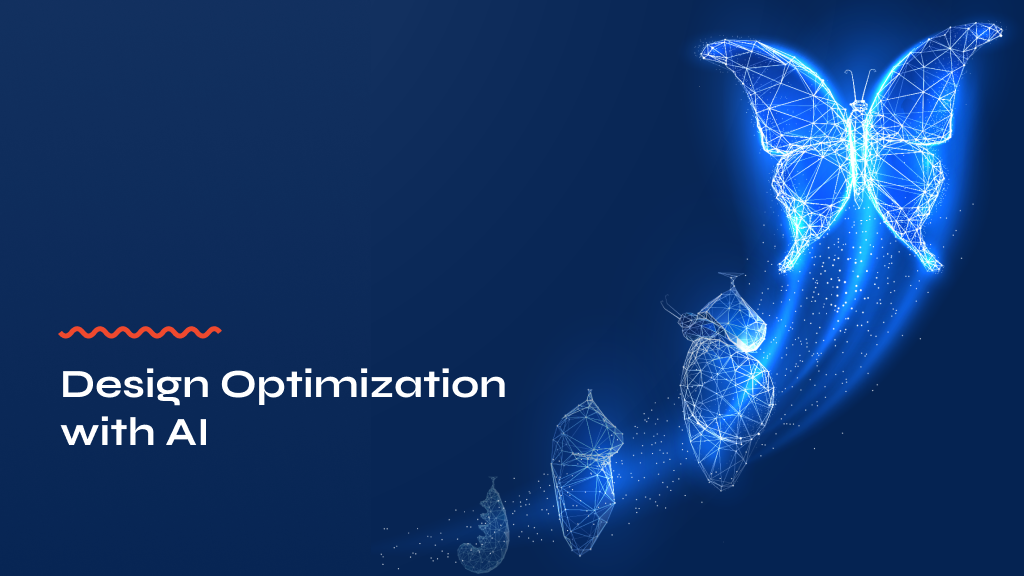Artificial Intelligence • August 9th, 2023
In the ever-evolving landscape of digital design, the pursuit of excellence never rests. Enter Artificial Intelligence (AI), a powerful ally in the quest for perfection. In this article, we dive into the realm of design optimization, where AI takes center stage, uncovering its potential through A/B testing and multivariate testing. Additionally, we explore how AI refines user interfaces for superior performance. It’s a journey that demonstrates how data-driven insights can unlock design’s full potential, delivering experiences that captivate and satisfy users.
The Essence of Design Optimization
Design optimization is an art that goes beyond aesthetics; it’s about enhancing the user experience, boosting engagement, and achieving specific goals. Traditionally, designers relied on intuition and best practices to refine their designs. However, AI has ushered in a data-driven era, where design decisions are based on empirical evidence rather than gut feelings.
The Power of A/B Testing
A/B testing, also known as split testing, is a tried-and-true method for optimizing design. It involves comparing two versions of a design (A and B) to determine which one performs better in terms of user engagement, conversions, or other key metrics.

The AI-accelerated platform Optimizely has embedded AI natively across its fully-composable DXP
The Role of AI in A/B Testing
AI turbocharges A/B testing by automating various aspects of the process. AI algorithms can:
- Identify Key Metrics: AI helps pinpoint the most crucial metrics to track during A/B tests, ensuring that designers focus on what truly matters.
- Segment Audiences: AI can segment user groups based on behavior, preferences, or demographics, enabling designers to tailor tests to specific audience segments.
- Predict Outcomes: By analyzing historical data, AI can predict the likely outcomes of A/B tests, giving designers insights into which changes are most likely to yield positive results.
- Iterate Rapidly: AI-driven A/B testing allows for faster iterations. Designers can test multiple variations simultaneously, accelerating the optimization process.
Multivariate Testing: Exploring Design Possibilities
While A/B testing compares two versions of a design, multivariate testing takes it a step further by examining multiple design elements simultaneously. It’s like conducting several A/B tests at once, exploring how various combinations of design changes impact user behavior.
AI’s Contribution to Multivariate Testing
AI plays a pivotal role in multivariate testing by handling the complexity of analyzing numerous variables and their interactions. AI-driven multivariate testing can:
- Scale Complexity: AI can manage a vast number of design variations, making it possible to test a multitude of design elements simultaneously.
- Discover Insights: AI-powered analysis can uncover hidden insights about how different design elements interact and influence user behavior.
- Optimize Continuously: With AI, multivariate testing becomes an ongoing process, continuously fine-tuning designs for maximum performance.
Refining User Interfaces with AI
User interfaces (UI) are the gateway to digital experiences. AI brings a new dimension to UI design, making interfaces more intuitive, responsive, and user-centric.
Dynamic User Interfaces
AI can transform static interfaces into dynamic ones that adapt in real-time to user behavior and preferences. For example, an e-commerce website can rearrange product listings based on a user’s browsing history, increasing the likelihood of finding items of interest.
Predictive Interactions
AI can predict user actions and tailor interface elements accordingly. For instance, a smart assistant can suggest actions or content based on a user’s habits and context, creating a more fluid and anticipatory user experience.
Challenges and Considerations
While AI-driven design optimization holds great promise, it’s not without challenges and ethical considerations:
Data Quality and Bias
AI relies heavily on data. If the data used in design optimization is biased or of poor quality, it can lead to skewed results and unintended consequences.
Privacy Concerns
Collecting user data for design optimization raises privacy concerns. Striking a balance between user privacy and data collection is crucial.
Transparency and Explainability
AI-driven design decisions can sometimes lack transparency and explainability. Users and designers may not understand why a particular design was chosen, leading to trust issues.
The Future of Design Optimization
As AI continues to advance, the future of design optimization holds exciting possibilities:
Hyper-Personalization
AI can deliver hyper-personalized experiences where every aspect of a design adapts to the individual user’s preferences and context, creating a truly unique experience.
Real-Time Optimization
AI-driven design optimization can happen in real time, allowing interfaces to continuously adapt based on user interactions, ensuring optimal performance at all times.
Enhanced Collaboration
AI can facilitate collaboration between designers and AI systems, offering design suggestions and insights in real time, and fostering a creative partnership.
Conclusion
Design optimization with AI is a journey that embraces data-driven decision-making to create user experiences that captivate and satisfy. A/B testing and multivariate testing, powered by AI, bring precision and speed to optimization efforts. The evolution of AI-driven design is ongoing, promising hyper-personalization, real-time optimization, and enriched collaboration. In this AI-infused era, design optimization transcends traditional boundaries, becoming a dynamic, data-driven art form.
If you enjoyed reading this article, please share it with a colleague or friend, and join me next week to learn about Accessibility and Inclusivity.



